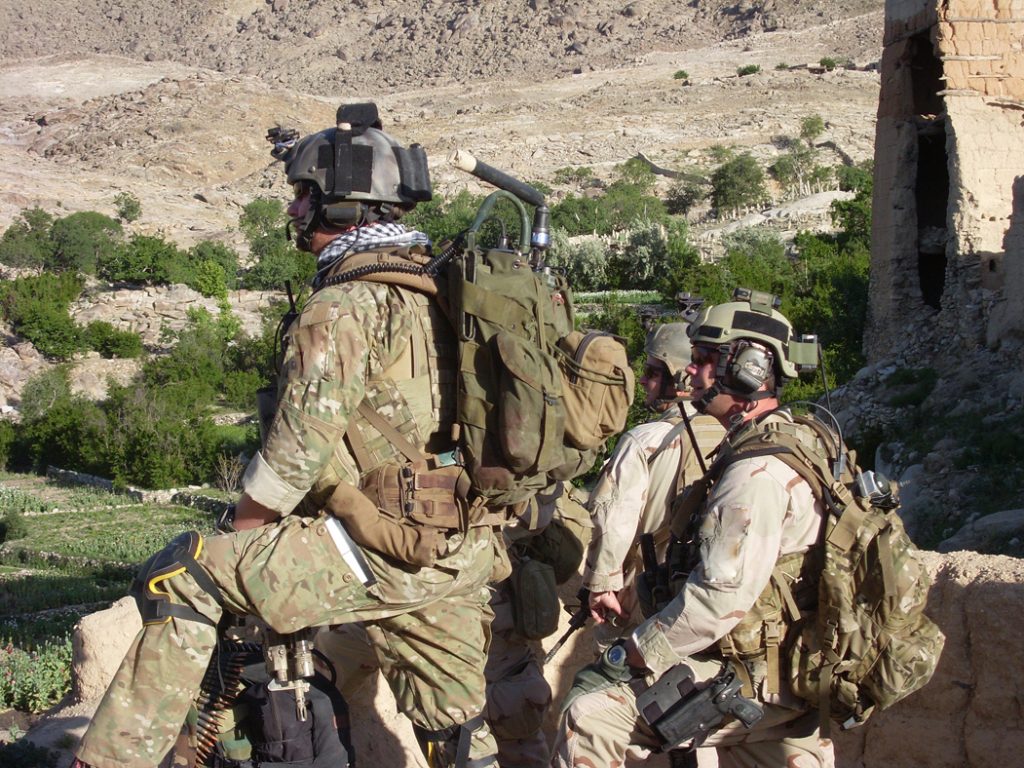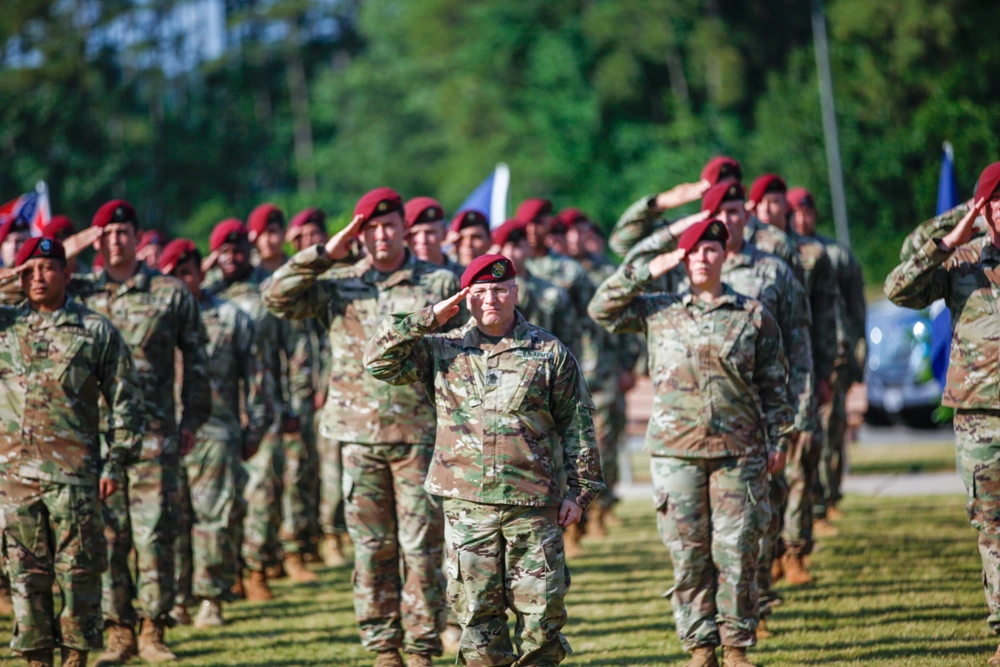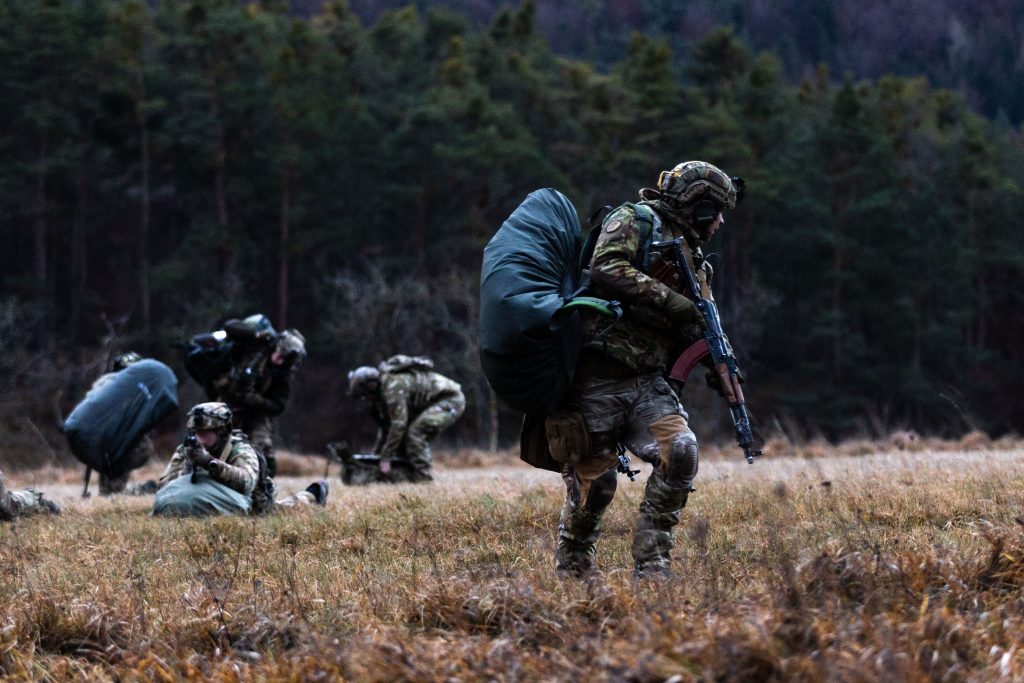Where do US Army special operations fit in a world of strategic competition?
The United States is still adjusting to an era of strategic competition with adversarial nations. Successful adaptation to this new strategic landscape will require the capacity to do several things well: deterring rivals, integrating rapidly changing technology, and actively accumulating strategic advantage around the globe. As a consequence, the entirety of the US military is seeking to update capabilities to meet these challenges. For the US Special Operations Command (SOCOM) community, such adaptation will require the development of some new capabilities while other skills will simply need to be revived from previous eras of great power competition. US Army Special Operations Forces (ARSOF) can play an important role in the era of strategic competition, but it will largely do so through its long-standing “superpower” of building networks and fostering relationships. More directly, ARSOF’s regional alignment creates cultural expertise and generational relationships in critical locations around the world. Further, small and agile ARSOF units provide increased options and positional advantage in today’s strategic competition with China and Russia. They do so by leveraging their globally distributed access, placement, and influence to achieve effects in collaboration with allies and partners.
Transitioning from the global war on terror
Making adjustments for the emerging era of strategic competition has been challenging due to the deep impact the global war on terror has had on the US military in general, and the special operations community in particular. This impact was driven by the specific conditions that characterized the wars in Iraq and Afghanistan. For example, the United States and its allies enjoyed overwhelming technological superiority. This resulted in little impetus for significant technological innovation, but rather a focus on linear improvements of legacy systems and approaches. Further, these wars were largely restricted to specific “war zones” that were constrained by scope and geography. This limitation in scope drove US military forces to emphasize tactical prowess to drive battlefield victories. Finally, the violent extremist organizations (VEOs) in Iraq and Afghanistan were seen as illegitimate entities that needed to be destroyed outright (not bargained with). This lack of legitimacy removed the need to synchronize diplomatic bargaining with the use of force, as the primary military objective of these conflicts was the utter defeat of these VEOs to achieve larger strategic goals such as preventing terrorist attacks on the US homeland.

The transition to an era of strategic competition has upended all three of these conditions, which necessitates significant adjustment for the US military. Today’s competitors are true peers across a range of strategically relevant technologies (and are leading in many), which puts the United States in the uncomfortable position of playing catch up. Additionally, today’s strategic competitors, China and Russia, are not limited to any geographic war zones: they enjoy reach across the globe and can synchronize their strategies across all domains of competition. Finally, since China and Russia are legitimate (if sometimes adversarial) nation-states, strategic competition requires the seamless weaving together of calculated diplomacy, active contestation, and even cooperation across a range of domains.
These changing conditions, in turn, pose serious challenges for US security. The first is the challenge of deterrence. Unlike the Cold War, in which the task was to shape Soviet behavior under the shadow of catastrophic war, the task is now to shape Chinese behavior under the shadow of the cataclysmic disruption of our interdependent economies as well as catastrophic war. Tools are required, therefore, that are capable of communicating credibility in bargaining while avoiding inadvertent escalation in both of these realms (economic and military). Another challenge is the need for agile innovation and technology adoption in an era of unprecedented technological change. Forces are thus needed that could serve as a test bed for the rapid prototyping of cutting-edge capabilities. Finally, rather than simply considering a binary of “war versus peace,” competition may be considered a persistent and natural state of affairs. This requires forces that can engage in globally synchronized, active measures to accumulate strategic advantage in the enduring, competitive “steady state.” As these changing conditions impact US national security, each element of the SOF community—as well as the broader joint force—should ascertain and develop its comparative advantage moving forward.
The Army SOF community offers a way forward
The ARSOF community has important contributions to make in this challenging environment. This community of military units includes the Rangers, special operations aviators, special forces (Green Berets), civil affairs, and psychological operations, along with a host of logistics, communications, and intelligence teammates. These forces offer a myriad of capabilities in crisis, conflict, and competition in all five domains (land, sea, air, space, and cyberspace) and within the information environment. They are characterized by rigorous selection processes that are based as much on maturity and cognitive flexibility as physical toughness. This results in a force deeply imbued with the capacity for critical thinking and providing creative solutions for novel challenges.

But these facts hold true for all special operations units across the four military services, so what distinguishes Army SOF (ARSOF)? It can be argued that ARSOF has a particular advantage building relationships with allies and partners around the world. This is due to the selection and professional development efforts within ARSOF that emphasize understanding the human dimension of conflict, empathizing with local cultures, and maintaining language skills. ARSOF is doubling down on these attributes, while other special operations component commands seem to be moving toward other niches within the strategic competition mission space. ARSOF’s emphasis on people skills will continue to be its superpower; further, it will pay dividends in strategic competition by both preparing for conflict “by, with, and through” collaborative partners as well as in the broader relationship building that engenders trust and access across a global network of friendly nations.
Flexibility in deterrence efforts
Consider the challenge of deterrence in strategic competition. Effective bargaining in deterrence necessitates the sending of credible signals to an opponent for the purpose of dissuasion. The central conundrum of deterrence is that “a rational state may choose to run a real risk of . . . war in order to signal that it will fight if not given a good deal in bargaining.” The key, then, is having military capabilities that can serve as highly refined and careful tools of signaling—to achieve the best bargain while not inadvertently escalating to catastrophe. ARSOF elements can serve this function with more flexibility than larger units of the conventional military (which may be more robust in terms of combat power but less manipulable) through their efforts with allies and partners.
There are numerous instances of ARSOF creating deterrent effects through access, placement, and influence. Consider the war in Ukraine today. While US forces left Ukraine at the outset of the Russian invasion, ARSOF left behind robustly trained Ukrainian Special Operations and Information Operations Forces with whom they have partnered since 2014. Eight years of investment by US Army Green Berets, psychological operations, and civil affairs professionals have enabled a lethal and capable Ukrainian SOF vastly superior to its former Cold War Spetsnaz self. It has doubled in size and is now modeled on NATO SOF best practices. These forces have since proved vital on the battlefields of Ukraine, imposing outsized costs on Russian invaders through the “Resistance Operating Concept” imparted by ARSOF efforts, leading in part to a whole of nation resistance in Ukraine. While Russia was not deterred from initially invading Ukraine, these battlefield successes have created a resounding endorsement of the impact of ARSOF’s investment prior to the conflict. The success of Ukraine, due in part to these enablement efforts, is likely tempering the ambitions of further territorial grabs in Eastern Europe—or in the Pacific . However, Ukraine also provides an example of the value of generations of investment by US ARSOF throughout the entire region. The same NATO SOF allies with whom the United States has been training since the end of the Cold War have since taken the lead in continuing to train Ukrainian SOF after the departure of US troops, taking the lessons taught by years of investment by US Green Berets and imparting them to their Ukrainian partners. This is a powerful example of ARSOF having outsized deterrent effects by, with, and through allies and partners.
Collaborative innovation
Consider the challenge of innovation. Radical changes in technology continue to play a pivotal role on the modern battlefield and this ensures that agile innovation will play a critical role in strategic competition. The Department of Defense’s Defense Innovation Board (DIB) recommends how to achieve such innovation: “[Be] rapid, iterative, and risk-tolerant. Instead of giving processes pride of place . . . focus on outcomes, and how to get there most efficiently.” SOF can play a significant role here. As Eliot Cohen observed as far back as 1978, elite units can serve as laboratories to “try out new doctrines, test their validity, and then spread them to the rest of the force.” The track record of ARSOF being such an engine of innovation is well-established and is only picking up steam, from the integration of Global Positioning System (GPS) technology into military operations during the Gulf War, to the recent development of technology to remotely advise and assist partner forces in combat, to current innovation around secure, cloud-enabled data sharing at the tactical edge. Looking forward, an emerging vision for the intimate relationship among a triad of SOF, cyber operations, and space capabilities promises significant potential for increased impact of ARSOF through technologically enabled innovation.

Allies and partners can play a powerful role in enabling such innovation—to the benefit of all parties involved. This partner-driven innovation can occur in active operations. The battlefield impact of Ukrainian SOF discussed above, for example, is punishing Russian invaders today, but will also provide value to US and allied SOF organizations in the future as lessons are culled from their experience. Innovation also occurs in peacetime, and such side-by-side efforts can generate huge benefit. Such partnered innovation can enable the development of home-grown solutions for partner force needs and allow for the invaluable testing of emerging technology in a variety of contexts and conditions, all while building deeper relationships. ARSOF is perfectly postured to take the lead in this type of innovation, which is as much about people as it is about technology.
Leading the way in campaigning
Finally, consider the challenge of active contestation in strategic competition. The term “campaigning” has recently been coined to capture this type of activity; it refers to active efforts to change the relative position of the United States and its adversaries through the steady accrual of advantage while undermining opponents’ efforts to do the same. ARSOF thrives in this space: globally distributed forces can serve as sensors, problem solvers, and executors in the game of steady contestation and have been doing so long before the term was in vogue. Doing so with partners has always been the key to success for such efforts, and ARSOF contributions in this arena will become even more critical in the next few years.

Working with partners is a necessary condition for success in any such campaigning activities. Consider Army SOF efforts in Latin America during the 1980s, in which Soviet and Cuban influence was contained through deft application of hard and soft tools in close conjunction with conventional forces, interagency partners and, most importantly, local actors. This represented an effort to synchronize low intensity activities to contest rival influence in a region of high importance to American security. Today, the Indo-Pacific is a region that is ripe for an updated version of such efforts, which would require the careful orchestration of soft and hard elements of power to deter and compete with adversaries. While the Indo-Pacific region is unquestionably dominated by sea power, forward forces with access, placement, cultural expertise, and generational relationships with allies and partners will be vital for the United States before, during, and after any conflict.
Consider the Philippines, where ARSOF has maintained deep ties with Filipino SOF partners since 2002. Though much of this effort has been focused on counterterrorism efforts—as evidenced by US support during the bitter siege of Marawi—it extends to softer efforts as well. In 2013, Super Typhoon Haiyan battered the Philippines. Elements of the Army’s 1st Special Forces Group (Airborne) were some of the only elements in the remote areas impacted most heavily by the storm, and their fortuitous presence enabled them to rapidly open airfields, provide aid, and assist in the overall disaster relief efforts. While disaster response was not the purpose of their deployment, it was the forward access and placement already at the point of need that allowed this force to provide such assistance and respond to the crisis. This display of basic human empathy and the readiness to help those in need is a powerful reflection of American values on the world stage.
The results of these generational relationships even reveal themselves at the highest levels. The recent move by the Philippines to prioritize its relationship with the United States over its association with China provides another example of the value of years of investment by ARSOF. When Philippines President Rodrigo Duterte was looking to pivot toward China a few years ago, it was then-Secretary of Defense of the Philippines Delfin Lorenzano who strongly advocated for the value of US partnership over China, which is the direction the Philippines ultimately chose. Lorenzano had previously served as the head of Filipino Special Operations and worked side-by-side with US Army SOF for decades, surely shaping his understanding of the value of the longstanding relationship with the United States. In sum, these successes at active shaping of the strategic landscape are due to the forward placement of ARSOF and the longstanding relationships that emerge.
Conclusion
Relationships matter. This point seems obvious, but it often runs the risk of being lost in the broader push to reorient the American national security establishment toward peer competition. There are monumental challenges of force restructuring and global posturing in order to deter adversaries and prepare to win in conflict—all being conducted while technology is changing at an unprecedented pace. Given this, more traditional necessities such as building and maintaining relationships may be neglected.
We have made the case here that succeeding in strategic competition will be a team sport. It will require persistent and purposeful collaboration with allies and partners in the steady state because you “cannot surge trust.” Building and maintaining such relationships is the true comparative advantage of ARSOF, as these military professionals are just as focused on building relationships as they are at competing directly with adversaries. These partnering skills serve to complement and amplify other efforts in strategic competition, as a small ARSOF mission can exert an outsized effect in deterrence, campaigning, and innovation by identifying and enabling the right collaborative team. It is these skills, coupled with persistent global access and placement, that make ARSOF a low-cost, low-risk, precise, and highly effective instrument in an era of strategic competition.
The views expressed in this article are those of the authors and do not reflect the official policy or position of the Department of Defense or the U.S. government.
About the authors
Major General Richard Angle is a graduate of the US Military Academy and holds advanced degrees from Webster University and the National Defense University’s Eisenhower School. His most recent assignments include the commanding general of 1st Special Forces Command (Airborne), the deputy commanding general of Joint Special Operations Command, and the deputy commanding general for operations of US Army Cyber Command.
Leo Blanken is an associate professor in the Defense Analysis Department at the Naval Postgraduate School, where he is the academic lead for the Applied Design for Innovation graduate curriculum. He has written on irregular warfare, strategic competition, and defense economics. He is the author of Rational Empires: Institutional incentives and Imperial Expansion (University of Chicago Press) and co-editor of Assessing War: The Challenge of Measuring Success and Failure (Georgetown University Press).
Lieutenant Colonel Philip Swintek is a Special Forces officer in the United States Army. He is a graduate of Fordham University and holds masters of science degrees from the Naval Postgraduate School in both defense analysis and space systems operations.

Forward Defense, housed within the Scowcroft Center for Strategy and Security, generates ideas and connects stakeholders in the defense ecosystem to promote an enduring military advantage for the United States, its allies, and partners. Our work identifies the defense strategies, capabilities, and resources the United States needs to deter and, if necessary, prevail in future conflict.
Image: U.S. Soldiers with Special Operations Command, Europe, 1st Battalion, 10th Special Forces Group (Airborne), Detachment Alpha 0114 participate in heavy weapons train with their Hungarian counterparts at Szolnok Air Base, Hungary, July 10, 2012. This partnership development program in various locations in Hungary is designed to foster good communication and relationships in preparation for upcoming joint deployments to Afghanistan. (U.S. Air Force photo by Staff Sgt. Tyler Placie)